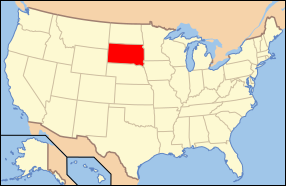Under an order federal Judge John Corbett O’Meara issued in late November 2013, Michigan must consider paroling 350 prisoners serving life sentences for crimes they committed as juveniles. This complies with a June 2012 U.S. Supreme Court decision that sentencing schemes that fail to account for a young person’s potential for character and cognitive development are a form of cruel and unusual punishment. The justices declared that juveniles handed life sentences are entitled to the possibility of parole.
Judge O’Meara said that by Jan. 31, 2014, the state must 1) create an administrative structure to determine which “juvenile lifers” deserve parole, 2) inform juvenile lifers who’ve been behind bars for at least 10 years that their eligibility for parole will be considered in a meaningful and realistic manner, 3) schedule proceedings, including public hearings, for eligible prisoners applying for parole, 4) ensure the Parole Board explains its decision in each case and that there will be no vetoes (of parole) by the sentencing judge or anyone else.
Judge O’Meara also ruled:
As of the date this process begins, no prisoner sentenced to life imprisonment without parole for a crime committed as a juvenile will be deprived of any educational or training program which is otherwise available to the general prison population.
Lansing lawmakers are considering legislation to change state sentencing guidelines for juvenile lifers. A bill approved unanimously by the Senate in October would allow some minors convicted of murder to avoid life sentences, but it wouldn’t apply to those currently behind bars. A House bill would permit parole consideration retroactively for juvenile lifers.
The Sentencing Project
recently released a report and national survey results on Juvenile Life Without Parole (JLWOP). It noted that United States stands alone worldwide in imposing life sentences without parole on juveniles, and that today a record number of people are serving such sentences.
Many of us erroneously believe that sentences of life without parole translate to a handful of years in prison followed by inevitable release. In reality, such a sentence usually means that the individual will die in prison.
The majority of JLWOP sentences are imposed in states in which judges are obligated to sentence individuals without consideration of any factors relating to a juvenile’s age or life circumstances. Pennsylvania, which has the most juvenile lifers, requires that youth of any age charged with homicide be tried in adult court and, upon conviction, be sentenced to life without the possibility of parole.
This first-ever national survey of juvenile lifers deals with their life experiences prior to their conviction, as well as descriptions of their lives while incarcerated. The findings are sobering, and should motivate policy discussion about this extreme punishment.
Most people sent to prison for life as youth were failed by systems that are intended to protect children. Survey findings from 1,579 individuals around the country serving these sentences demonstrate high rates of socioeconomic disadvantage. There are also extreme racial disparities. Sentences are frequently imposed without judicial discretion and utilize counterproductive corrections policies that thwart efforts at rehabilitation.
Seventy-nine percent of juvenile lifers reported witnessing violence in their homes; 54.1 percent witnessed weekly violence in their neighborhoods; 46.9 percent experienced physical abuse, including 79.5 percent of girls; 31.5 percent of juvenile lifers were raised in public housing; 17.9 percent were not living with a close adult relative just before their incarceration and some reported being homeless, living with friends or being housed in a detention facility, treatment center or group home.
Juvenile lifers faced significant educational challenges: two in five had been enrolled in special education classes, only 46.6 percent had been attending school at the time of their offense and 84.4 percent had been suspended or expelled from school at some point.
The survey found that often corrections policies curtail efforts at rehabilitation. Most (61.9 percent) juvenile lifers are not engaged in programming in prison, but this is usually not due to lack of interest, but because of state or prison policies. Many juvenile lifers are engaged in constructive change during their imprisonment when they are permitted the opportunity to do so. Two-thirds have attained a high school diploma or GED.
Despite long distances from home and family, many juvenile lifers attempt to maintain close ties with loved ones through phone calls, letters and visits. As years in prison pass, lifers are charged with significantly fewer disciplinary actions.
Today, most states have enacted provisions for transferring some youth out of juvenile courts and trying them in adult courts. These situations expanded greatly in the past 20 years. Part of the reason for the rise in sentencing youth to life in prison was the upswing in crime in the late 1980s and early 1990s, fueled in large part by crack cocaine and easy access to illegal guns. By 1993, the rate of juvenile homicides had tripled from 1983.
However, homicide rates among juveniles dropped 74 percent from 1993 to 2008. But fueled by media reports of celebrated cases and resulting public fears, catch phrases such as “adult crime, adult time” were popularized. Policymakers responded with a frenzy of tough laws that disregarded developmental differences between youth and adults, and instead focused exclusively on the crime. State legislatures passed laws that eased the way for young people to be transferred to and tried in adult courts. By the mid-1990s, every state had passed laws that either allowed or mandated that teenagers be tried as adults under certain circumstances. So there was a steep rise in the number of teens who were sentenced to life without parole during the mid-1990s.
Based on survey results from 49 states (not Louisiana), respondents have been in prison an average of 15 years; 359 of them for least 21 years and one juvenile offender has already served 49 years in prison. Sixty percent are black and 14.3 percent are Latino.
Survey respondents reported childhoods that were marked by frequent exposure to domestic and community-level violence, problems in school, engagement with delinquent peers and familial incarceration. While an estimated one in 16 young people in the general public experiences sexual abuse, it’s one in five among the JLWOP respondents.
Survey respondents were over six times more likely to report having witnessed family violence than other youths did. Sixty-two percent perceived their neighborhood to be unsafe and more than two-thirds saw drugs sold openly where they lived. More than 54 percent of juvenile lifers witnessed acts of violence on at least a weekly basis. More than a quarter of them have had a parent in prison and 59.1 percent had a close relative in prison.
Teenagers housed with adult prisoners face a heightened risk of suicide, sexual assault and physical assault. The Sentencing Project Report suggests these solutions: Eliminate JLWOP sentences, allow and encourage these Inmates to engage in rehabilitation programming, address racial disparities and house youth in age-appropriate settings, pre-trial and post-conviction.
RELATED ARTICLES






























































